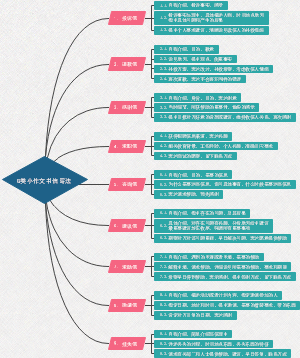导图社区 非谓语动词
- 226
- 10
- 3
- 举报
非谓语动词
非谓语动词知识思维导图,主要内容有:定语、状语、表语、补语、主语、宾语、秘籍等内容,希望对你有所帮助!
编辑于2022-06-28 16:34:12- 非谓语动词
- 英语动词
- 相似推荐
- 大纲
非谓语动词
定语
前后一定是个名词
to do
一定是在名词之后 称为后置定语
自带将来时属性
I have work to do.
排他性强调
He is the first one to kill.
抽象名词 ability, chance, idea, right, evidence, attempt, plan, way, reason, opportunity, time
doing
可以在名词的前后
前置定语
The sleeping baby is my nephew.
后置定语
There are no soldiers drilling. (单个的现在分词用作后置定语主要见于有较强的动词意义时。)
There were some children swimming in the river. (如果是现在分词短语做定语,则总是位于所修饰的名词之后。)
done
可以在名词的前后
The stolen car was found by the police last week.
He likes the gift bought by his father.
状语
to do
目的状语
I come here to see you.
结果状语
it is not good enough to pass.
原因状语
I am so happy to meet you.
表语化的状语
表语的形容词easy, hard, difficult, pleasant, good, fit, comfortable等后面作状语。例 This book is difficult to understand.
阅读时一定要删去
doing
与句中主语构成逻辑上的主谓关系,与句中谓语动作同时发生,或几乎同时发生。 doing 是主语发出的动作。
①作原因状语。相当于as, since, because引导的原因状语从句。 例 Being tired, I stopped to have a rest. (=Because I was tired, I stopped to have a rest.)
②作条件状语。相当于if引导的条件状语从句。 例 Turning to the left, you will find the school. (=If you turn to the left, you will find the school.)
③作让步状语。相当于though, although, even if 引导的让步状语从句。例 Knowing where I live, he never comes to see me. (=Though he knows where I live, he never comes to see me.)
④作结果状语。相当于so that 引导的结果状语从句。例 He turned off the lamp, seeing nothing. (=He turned off the lamp so that he saw nothing.)
现在分词短语作结果状语时,表示一种自然而然的结果,通常放在句末,与句子其他部分用逗号隔开;不定式作结果状语时往往表示一个不好的或出乎意料的结果。
⑤作方式状语或伴随状语,此时现在分词短语不能转化为状语从句,但可转化为并列分句。The condition normally occurs in elderly people and is irreparable, resulting in permanent loss of vision.
⑥作时间状语,相当于when,while引导的时间状语从句。例 Hearing the news, they immediately set off for Shanghai. (=When they heard the news, they immediately set off for Shanghai.)
done
其逻辑主语通常就是句子的主语,且主语是过去分词动作的承受者,过去分词与主语之间存在逻辑上的动宾关系。过去分词(短语)作状语可表示时间、原因、方式、条件、伴随和让步。
①作时间状语。可转换为when, while引导的时间状语从句。例 Asked what had happened, he told us about it.→When he was asked what had happened, he told us about it.
②作条件状语。可转换为if引导的条件状语从句。例 Given more time, I'll catch up with you.→If I am given more time, I'll catch up with you.
③作原因状语。可转换为because, as等引导的原因状语从句。例 Encouraged by the progress he has made, he works harder.→As he is encouraged by the progress he has made, he works harder.
④作让步状语。可转换为though, although, even if等引导的让步状语从句。例 Left at home, John didn't feel afraid at all.→Although he was left at home, John didn't feel afraid at all.
⑤作方式状语或伴随状语。一般不能转换为状语从句,但可转换为并列分句。例 Dressed in white, she suddenly appeared.→She was dressed in white and suddenly appeared.
表语
不定式作表语:不定式在系动词后作表语,可表示主语的内容、将来的动作、命令、建议、事态发展的结果等。 例1 His job is to write reports for the newspaper. 例2 The problems remain to be unsettled.
现在分词作表语:①相当于名词,用于解释主语的内容,表语和主语常常可以互换位置。②相当于形容词,用于说明主语的特征,主语和表语不可以互换位置。例1 My favorite sport is swimming. (动词-ing作表语) 例2 The result is very disappointing. (动词-ing作表语)
过去分词作表语:①位于系动词之后,多用于表示主语的状态或状况,所体现的是形容词的特性。例 I am pleased with the result of the experiment. ②强调主语所处的状态;动词的被动语态则表示主语是动作的承受者,强调动作。例1 The cup is broken. (强调杯子的状态) 例2 The cup was broken by Jim. (强调"打破"这一动作)
补语
to do
①带to的不定式作补语。动词allow, order, permit, tell, want, wish, forbid, advise, persuade, warn等之后跟带to的不定式作补语,形式为动词+宾语+宾补(不定式)或动词(被动)+主补(不定式)。例 He didn't allow us to smoke in his room.
②不带to的不定式作补语。使役动词(make, have, let等)及感官动词(see, watch, observe, hear, notice等)后作宾补的不定式不带to。但使役动词和感官动词用于被动语态(let一般不用于被动语态)时,作主补的不定式一定要加上to。例1 He made a face and made everybody laugh. 例2 He was seen to go upstairs.
doing
①感觉、感官类动词:see, notice, watch, look at, hear, listen to, find, feel, smell等。例1 He heard the wind blowing outside. 例2 I felt my heart beating faster.
②使役动词:keep, get, leave, set, have等。例1 I am sorry to have kept you waiting for so long. 例2 Her joke set us laughing.
done
①位于feel, find, hear, notice, see, smell, observe等感官动词后作补语。例1 He didn't notice his wallet stolen. 例2 I was sleeping when I heard my name called.
②位于get, have, make, keep, leave等使役动词后作补语。例 They are going to have the house painted white.
with复合结构中作宾补的非谓语动词 with+宾语+宾补结构可在句中作定语或状语(表示原因、时间、条件、伴随、方式等),宾补是名词/形容词/副词/介词短语/现在分词/过去分词/不定式。
主语
不定式作主语:不定式作主语时谓语动词用单数;若不定式太长,则用it作形式主语而将不定式后置。例1 To say is one thing; to do is another. 例2 To talk with him is a great pleasure.→It is a great pleasure to talk with him.
动词的现在分词形式作主语:①意义:多表示一般性的、抽象的动作或状态 ②谓语动词的数:通常用单数形式 ③位置:位于句首;也可位于句末,此时常用 it作形式主语 ④动词-ing的逻辑主语:形容词性物主代词、名词所有格 例1 Living in the city brings him lots of job chances. 例2 Jack's suddenly disappearing made them worried.
宾语
不定式作宾语:下列动词后只接不定式作宾语而不接动名词作宾语agree (同意), intend/plan (打算,计划), demand (要求), promise (答应), help(帮忙), prepare (准备), decide (决定), refuse (拒绝), choose (选择,决定), wish/hope(想要), want(想), expect (期望), fail(未能), pretend (假装), manage (设法完成), determine(决心), beg (恳求), arrange(安排), threaten(威胁), claim(声称), hesitate(顾虑), happen(碰巧)等。例1 They managed to finish the work on time. 例2 Don't pretend to know what you don't know.
①下列动词后接动词-ing作宾语而不接不定式作宾语:admit(承认), avoid, consider(考虑), escape(避开), imagine, mind, miss, practise, suggest(建议), enjoy等。例1 I often practise listening and speaking. 例2 Do you mind passing me that dictionary?
②下列短语动词后接动词-ing作宾语:can't help(不禁), feel like, give up, put off, object to, look forward to等。例 I object to being scolded for the matter. 巧记后接动词-ing作宾语的(短语)动词: 建议 考虑 坚持 练(suggest, advise, consider, insist on, practise) 允许 想象 弃 冒险(permit, allow, imagine, give up, risk) 阻止 抵抗 否 避开(prevent, resist, deny, escape) 不禁 介意 保持 完(can't help, mind, keep, finish) 承认 错过 心喜欢(admit, miss, enjoy)
秘籍
非谓语动词作定语时,其逻辑主语是被修饰词;作状语时,是句子的主语;作补语时,是动词或介词的宾语。分析非谓语动词与其逻辑主语(逻辑上的动作执行者)之间是主动关系还是被动关系(也就是看其逻辑主语是动作的发出者还是承受者)。如果逻辑主语与非谓语动词之间是主谓关系,则用现在分词;如果非谓语动词与其逻辑主语之间是动宾关系,则用过去分词。如果非谓语动词表示的动作尚未发生,则用不定式的被动式;如果非谓语动词表示的动作正在进行,则用现在分词形式的被动式。









